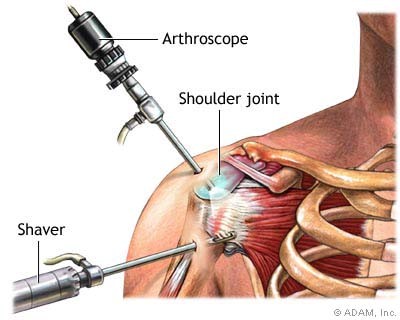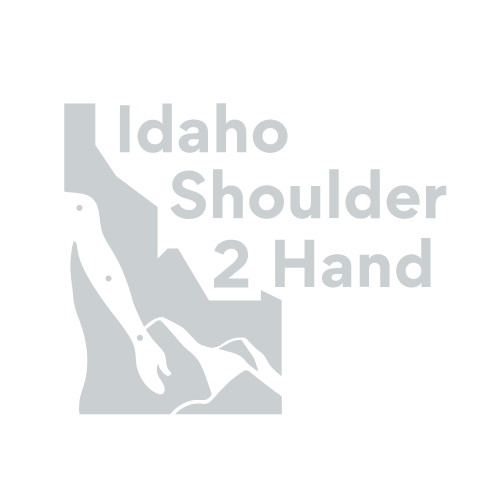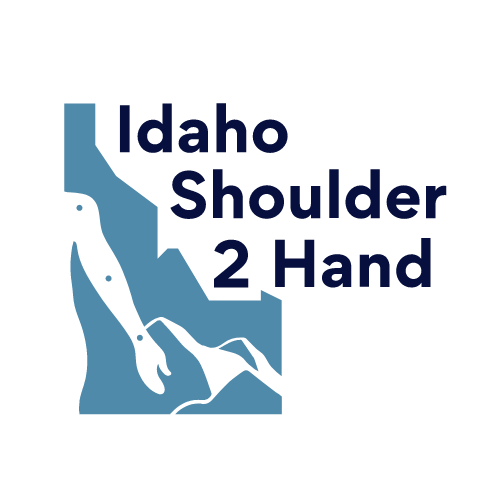Arthroscopic Surgery
What is arthroscopy?
Arthroscopy is a surgical procedure that orthopedic surgeons use to visualize, diagnose, and treat several problems inside of a joint. The word arthroscopy comes from the Greek words, “arthro” (joint) and “skopein” (to look). The term literally means “to look within,” in this case a joint. In an arthroscopic examination, the doctor makes small finger width incisions in the patient’s skin and inserts special pen sized instruments that contain a small lens and lighting system to magnify and illuminate the structures inside a joint. Light is transmitted through fiber optics to the end of the arthroscope that is inserted into the joint. By attaching the arthroscope to a miniature camera, the images of the joint are projected onto a monitor screen. The doctor is therefore able to see the interior of the joint through very small incisions rather than a large incision used in conventional “open” surgery.
When is arthroscopy utilized?
Diagnosing joint injuries and disease begins with a thorough medical history, physical examination, and usually X-rays. Additional tests such as MRI or CT may also be utilized. Through the arthroscope, a final diagnosis can be made which may be more accurate than through “open” surgery, X-rays, or MRI/CT alone.
Disease and injuries can damage bones, cartilage, ligaments, muscles, and tendons. Some of the most frequent conditions found during arthroscopic examination of joints are:
- Inflammation
Synovitis – inflamed lining (synovium) in the shoulder, elbow, or wrist
Arthritis – early stages of arthritis may be a candidate for debridement
- Injury
Shoulder – rotator cuff tendon tears, impingement syndrome, ligament tears/injury, frozen shoulder, certain fractures
Elbow – Tennis elbow, certain fractures
Wrist – TFCC tears, ligament tears, certain fractures
- Loose bodies of bone and/or cartilage
Shoulder, elbow, and wrist
How is arthroscopy performed?
 Arthroscopic surgery, although much easier in terms of recovery than “open” surgery, still requires the use of anesthetics and special equipment in an operating room. You will be given a regional anesthesia with or without general anesthesia, depending on the joint or suspected problem.
Arthroscopic surgery, although much easier in terms of recovery than “open” surgery, still requires the use of anesthetics and special equipment in an operating room. You will be given a regional anesthesia with or without general anesthesia, depending on the joint or suspected problem.
A small incision (the width of a finger or smaller) will be made to insert the arthroscope. Several other similar incisions may be used to see other parts of the joint or to insert “working” instruments. When indicated, corrective surgery is performed with specially designed instruments that are inserted into the joint through the accessory incisions. Many conditions can be treated arthroscopically.
What happens after arthroscopy?
After arthroscopic surgery, the incisions will be stitched and covered with a dressing. You will move from the operating room into the recovery room. Some patients need little or no pain medications, although it is not uncommon to have delayed moderate pain if a repair was performed. Before being discharged, you will be given instructions about care for your incisions, what restrictions you have, and what exercises you should begin to perform. During your follow up visit in 7-10 days, the doctor will examine your surgical site, remove your sutures, review your surgical images, and discuss your diagnosis and post-operative treatment program.
The surgical time and recovery time will depend upon the complexity of your problem. Occasionally, during arthroscopy, the doctor may discover that the injury or disease cannot be treated adequately with arthroscopy alone. An “open” surgery, if previously agreed upon, can be performed while you are still anesthetized. Otherwise, such an option will be discussed at your post-operative visit with your doctor.
What are the possible complications of arthroscopy?
Although uncommon, complications do occur occasionally during or following arthroscopy. Infection, phlebitis (blood clots of a vein), excessive swelling or bleeding, joint stiffness, damage to blood vessels or nerves to the arm, and instrument/implant breakage are the most common complications. These complications occur in far less than 1% of all arthroscopic procedures.
What are the advantages of an arthroscopic procedure?
Arthroscopic surgery is a valuable tool for both orthopedic surgeons and their patients. Recovery generally tends to be less painful than open surgery and most arthroscopic procedures can be done as an outpatient surgery.
Recovery after arthroscopic surgery?
The small incisions take several days to begin to heal. The operative dressing usually can be removed the morning after the surgery. Even if no repair was performed during the arthroscopy, it can still take several weeks (8-12, sometimes longer) for the joint to maximally recover. If a repair was performed during the arthroscopy, the recovery time will increase substantially. An individualized specific activity and rehabilitation program will be prescribed to aid in the recovery process. Each patient’s arthroscopic procedure is unique to that person as is the rehabilitation and recovery afterwards.

